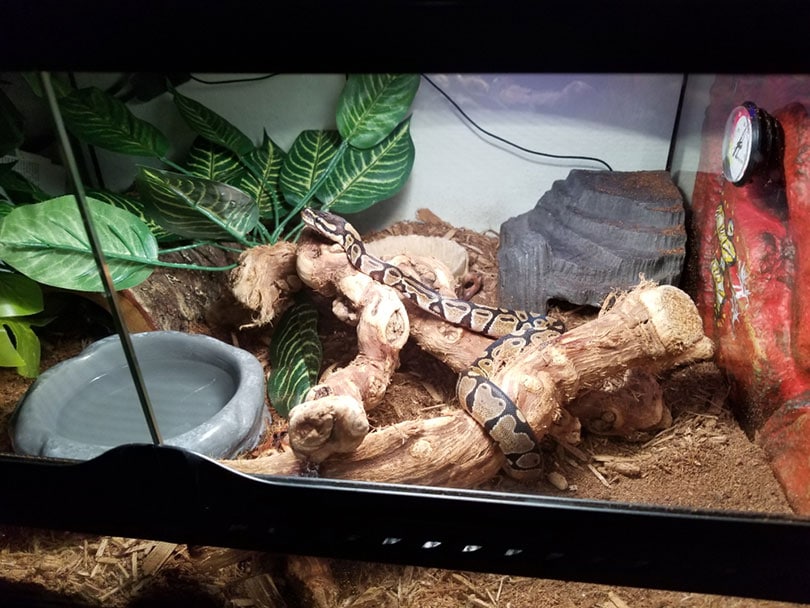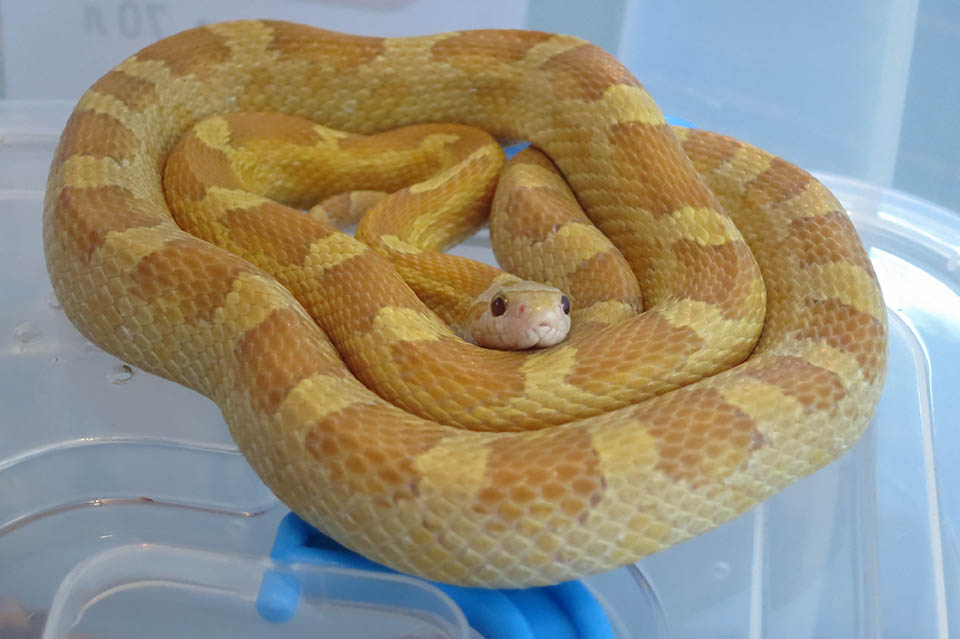
As a responsible pet python owner, you know that snakes require heat in their tank in order to survive. However, even the most responsible pet owners can’t prevent accidents such as power outages from happening, just like you can’t prevent your heat source from suddenly calling it quits.
In the event that either of those does happen, or something like it, you’re probably wondering how long your ball python can go without heat. The answer is not very long. Snakes can only last for a few hours without any type of heat source before their body starts to shut down.
What exactly could happen to your ball python if he does get too cold? And how can you keep your snake warm or provide him with a source of heat in the event of such an emergency? Don’t worry! With proper knowledge and preparation, you can make sure that your snake never has to go without a heat source for long enough to cause serious problems.
Why Do Ball Pythons Need Heat?
Ball pythons need heat because, like all reptiles, they are cold-blooded animals. Unlike humans who are warm-blooded, snakes are unable to regulate their body temperatures on their own. That means that their bodies need to absorb heat in order to carry out all of their bodily functions, including movement, digestion of their food, and even reproduction.
When snakes are in the wild, they usually only live in areas that have a year-round warm climate. This provides them with their main heat source to keep them warm, but they also need a basking spot in order to warm them up even more. Snakes use rocks or sticks in order to bask and absorb sunlight so that their bodies can function.
If a snake is kept as a pet, then as their owner, you are responsible for providing that heat source as there is an absence of natural sunlight when kept indoors. A ball python’s tank requires a heater that will need to remain on constantly in order to maintain the temperature of the tank.

You will also need to provide your ball python with a basking spot so that he can raise his body temperature whenever he needs to. Raising his body temperature in this way allows him to perform functions such as digesting his food properly so that he can generate energy.
Keep in mind, though, that your snake will not bask all the time. He also needs a cool-down period to lower his body temperature so that he can rest. However, the basking spot will need to be available to him at all times as well so that he can raise and lower his temperature as needed.
What’s the Best Tank Temperature for Ball Pythons?
Different snake species have different ideal temperatures in which they can live comfortably. The tank should be separated into different areas based on temperature. Ball pythons require their tank to be a minimum of 75°F in the cooler area in order to survive. But the ideal overall temperature of the tank should be around 80°F, with a basking spot temperature of around 90°F.
It is possible to make your snake too hot as well, which is the main reason why a snake needs a cool-down location. If the temperature in the tank, particularly the basking spot, is too warm, it can burn your snake. Any temperature above 95°F is too hot for your ball python, especially without a cool-down spot.

What Temperature Is Too Cold for Ball Pythons?
The absolute coldest temperature that any snake can survive in is 65°F. But since the ideal cool-down temperature for a ball python is 75°F, anything colder than that can cause your snake to become too cold, and his body will start to shut down.
You may be thinking that 75°F isn’t that cold, but you have to remember that most species of snakes live in subtropical, tropical, and desert regions. When temperatures get too cold in their natural habitats, they go into a period of brumation in which they conserve their energy and body heat by shutting down without actually dying.
Even pet snakes can go into brumation, similar to hibernation, during the colder winter months, as this is part of their natural instincts. However, the difference is that snakes will still wake up every once in a while to eat and drink.
Generally speaking, ball pythons should not brumate as they are tropical snakes, and it doesn’t usually get cold enough in their natural climate to warrant brumation. Since their tank is a more controlled environment and they don’t brumate, they can’t go for days or weeks on end without a heat source.
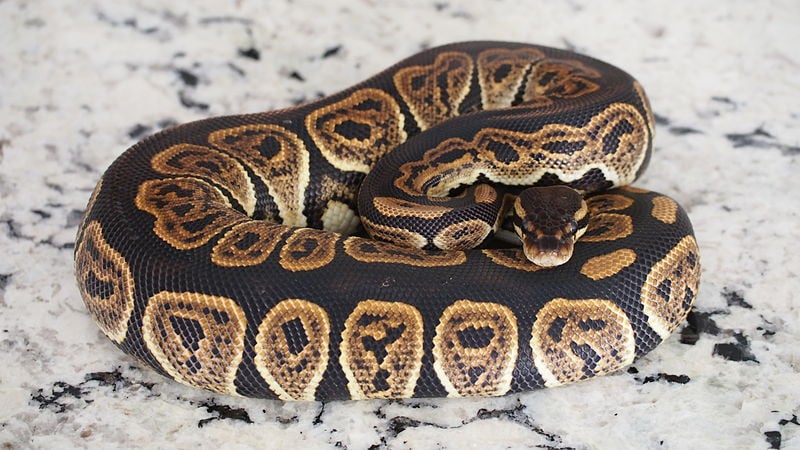
How Long Can Ball Pythons Go Without Heat?
Ball pythons can go about 6 hours in 75°F temperatures before it starts to cause problems for them and their body starts to shut down. Anything colder than 75°F lowers the amount of time that your snake can go without heat, and without brumation, temperatures below 65°F for even a couple of hours can usually be deadly for snakes.
Remember that ball pythons do not undergo brumation. If it looks like brumation is happening, it’s usually a sign that your snake is too cold.
What Happens If a Ball Python Gets Too Cold?
When a ball python gets too cold, it could lead to many health problems or could cause your snake’s body to eventually slow down. Here are some of the potential problems that could happen if your ball python gets too cold.
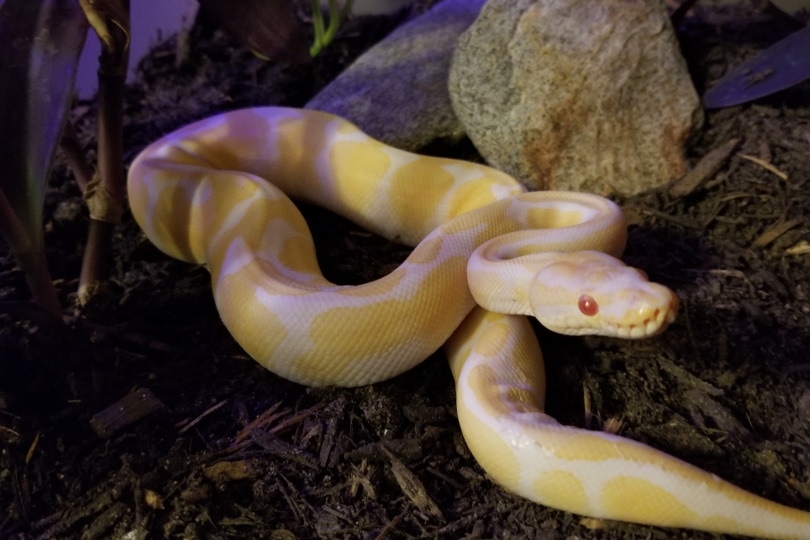
Illness
Snakes can get “colds” just like humans can. But the difference between snakes and humans is that snakes rely on heat to help them overcome a cold. Heat is also necessary to help your snake digest his food, which provides him with a source of energy.
Essentially, if a snake is exposed to the cold for too long, he can’t get any energy from his food. A lack of energy means that he can’t overcome his illness, which could eventually lead to his death. You can usually help your snake overcome this illness before it is too late by providing him with a heat source.
Hypothermia
Your ball python can develop hypothermia if it is kept in an environment that is too cold for too long, or only given heat for a few hours per day. This can also lead to your snake developing other health conditions such as a respiratory infection. Signs of hypothermia include skin that appears dehydrated, less movement, and loss of appetite.
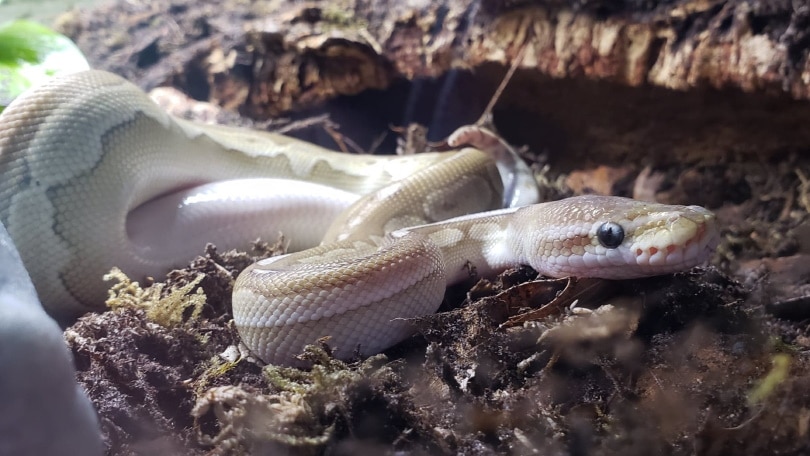
What Can You Do In An Emergency If the Heat Goes Out?
If an emergency happens, such as a power outage or the heater suddenly stops working, there are some things you can do to keep your snake warm enough that he’ll survive.
In the event of a power outage, especially for an extended period, you can invest in a small generator that you can hook up to your snake tank. It should provide enough power to keep the heater and basking spot on until the power comes back on.
Generators can be expensive, so if that isn’t an option or one of the heating components quits working altogether, there are some things you can do to keep your snake warm while you go get another one.
One suggestion is to fill a jug or bowl with hot water and place it in your snake’s tank. He can get close to the vessel holding the water and use it to warm up his body.
Say that you don’t have hot water, or you’ve replaced the heat source, and you’re waiting for the tank to warm up. Another option is to hold your snake close to your body while the tank warms back up. He can absorb some of your body heat to keep warm.

Conclusion
Because they are cold-blooded animals, heat is key to a ball python’s survival, and when kept as pets, they usually can’t survive for even a day without it. After just a few hours, they can get sick and their body will start to shut down. But in the event of an emergency, knowing how you can keep your snake warm is one of the most important things you can do to save his life.
Featured Image Credit: DWI YULIANTO, Shutterstock


